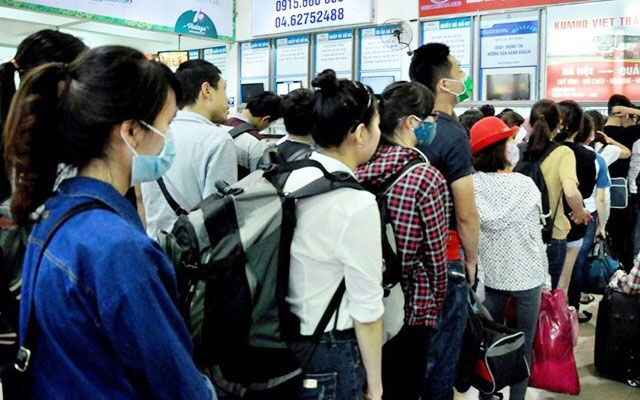


NDO – At the recent 2018 Vietnam Travel and Tourism Summit in November, both domestic and foreign experts shared proposals to remove obstacles that hinder the development of Vietnamese tourism.
Has tourism’s growth reached the threshold?
The annual growth rate of international visitors travelling to Vietnam has reached 30% over the past three years and the tourism sector is contributing 7.5% to the country’s GDP. Vietnam ranked sixth among the top ten fastest growing destinations in the world in 2017 and attracted US$15 billion of foreign direct investment (FDI) to tourism by the end of last year, creating jobs for over two million people. However, the Vietnamese tourism sector should make essential changes to avoid hitting the threshold.
In 2017, Vietnam welcomed nearly 13 million international tourists, earning US$8.3 billion. By the end of 2018, the number reached over 15 million. However, compared to Singapore (US$18.4 billion) and Thailand (US$52.5 billion), this figure is very low, not commensurate with the potential of the country. Each foreign visitor to Vietnam spent an average of only US$900 per trip, while the spending in Thailand was US$1,565 per trip. This situation showed that, although Vietnam has great potential in tourism and this industry has strongly developed, the level of tourism development still lagged behind many countries in the region. The general director of a travel company specialising in serving European tourists said that his company did not dare to bring visitors to Sa Pa because the number of tourists was too large, while the tourism infrastructure in the destination does not meet their demand.
Disadvantages of accommodation infrastructure are obvious. Hanoi now has 67 luxury hotels with over 10,000 rooms. In 2017, the capital city welcomed 4.9 million international visitors and nearly 19 million domestic tourists. There are 641 operating hotels in Ho Chi Minh City, including 10 five-star and 26 four-star hotels. All of them are always operating at full capacity.Meanwhile, the number of hotels in other attractive destinations, such as Nha Trang, Da Nang and Phu Quoc, is very limited. In order to serve a large number of visitors, particularly foreigners, tourism infrastructure must be always ready and qualified.
Addressing the Summit, Deputy Prime Minister Vu Duc Dam said that the Vietnamese tourism sector has reached very fast growth, but it is extremely difficult to maintain this speed. Because, when reaching a certain threshold, the tourism sector and other industries have to face challenges that can’t be solved in one or two years, such as aviation and airport infrastructure.
Measures to remove difficulties in infrastructure
Under a project to restructure tourism that was approved by the Prime Minister on December 5, the sector set a target of having total revenue of US$45 billion from tourists, earning US$27 billion of export value through tourism, and contributing over 10% to the GDP, as well as creating jobs for six million people, thereby increasing the rate of direct workers who are trained in and foster professional skills to 70%, as well as receiving and serving 30-32 million international visitors and over 130 million domestic tourists.
According to Deputy Minister of Culture, Sports and Tourism Le Quang Tung, the project was developed by the Ministry and received close consultation from the business community. It focuses on restructuring the market and the development of human resources. The Government has frankly pointed out the shortcomings and limitations in the tourism, including a lack of synchronisation in infrastructure, weak human resources, low capacity of management of destinations, and tourism development not being associated with environmental protection. However, the specific methods in the implementation of basic solutions as well as the coordination among tourism agencies around the country will be key issues in the future.
Regarding the growth of international visitors by 2025, Executive Chairman of Grant Thornton Vietnam Auditing and Consulting Kenneth Atkinson said that the ‘bottleneck’ ininfrastructure is hindering the development of Vietnamese tourism. John Lindquist, a global tourism expert and senior advisor of the Boston Consulting Group stressed that, in order to make breakthrough in tourism development, it is crucial to loosen the policy of granting visas to visitors, enhance traffic connections and strengthen investment in airport infrastructure. If drastic measures are not implemented, ‘limitations’ in airport infrastructure will hinder tourism development.
Domestic and international experts said that, in order to reach the above target, the Vietnamese tourism sector should change its structure, overcome challenges on infrastructure and hotels, accelerate airport development, improve service capacity and increase the airport transport.
Source:NDO